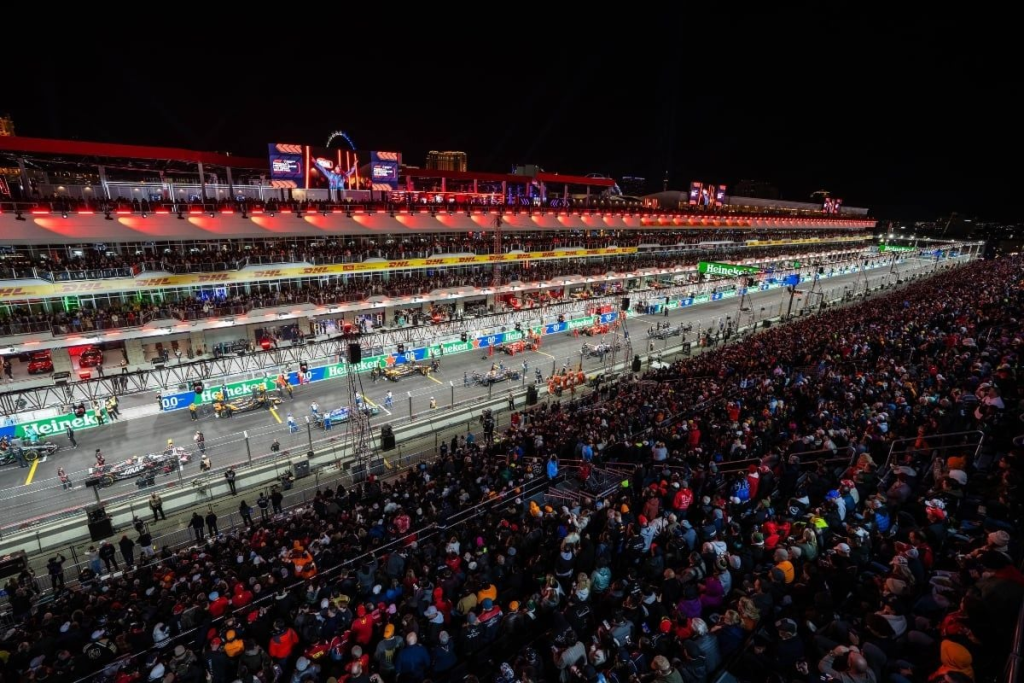
Set against Austin’s bold music-and-barbeque backdrop, the United States Grand Prix blends a festival vibe with one of Formula 1’s most technical modern circuits. Sweeping esses test aero efficiency, big stops invite daring overtakes, and changeable Texas weather keeps strategists honest. This guide covers the official-date workflow and weekend rhythm, on-track flashpoints, what news typically matters, a quick track dossier, and which teams and drivers to watch; and for fans who like to track odds or promos alongside the action, a quick Mostbet login can keep your race-weekend resources in one place.
United States F1 Grand Prix 2025 — official date and schedule
The Austin round traditionally lands in the late-season swing, when title pressure peaks and upgrades are fully baked. Expect a three-day format with Friday practice, Saturday qualifying plus sprint (if scheduled), and Sunday’s Grand Prix. Plan for heavy crowds, lively fan zones, and variable temperatures; book accommodation early and budget extra travel time around the circuit.
Indicative event timetable (local time, subject to official confirmation):
| Day | Session | Time (Local) | What to expect |
| Friday | Free Practice 1 | TBC | Baseline runs, aero rakes, race-pace checks |
| Friday | Free Practice 2 | TBC | Long-run comparison; tyre life scouting |
| Saturday | FP3 (if applicable) | TBC | Quali sims; wind and temperature reads |
| Saturday | Qualifying | TBC | Track evolution critical in Q2–Q3 |
| Saturday | Sprint (if scheduled) | TBC | Tyre stress test; grid-shaping duels |
| Sunday | Grand Prix | TBC | Strategy hinges on undercut windows & tyre deg |
Note: Exact local start times and whether a sprint is included will be confirmed in the official 2025 F1 timetable.
F1 United States Grand Prix highlights — key moments to watch
COTA (Circuit of the Americas) rewards cars with a strong front end and stable rear in high-speed transitions while punishing poor traction over bumps. The lap stitches together several distinct character zones, each ripe for drama; and for fans who like to track odds and promos alongside the on-track action, a quick Mostbet login can keep everything in one place.
Five on-track flashpoints:
- Turns 3–9 (the Esses): Rhythm section where downforce and driver confidence create qualifying separation.
- Turn 11 hairpin exit: Launchpad onto the back straight; traction here decides DRS pass viability.
- Turn 12 braking zone: Classic late-brake overtaking hotspot; watch for switchbacks on exit.
- Stadium section (Turns 15–19): Medium-speed accuracy; track limits and wind gusts catch the unwary.
- Final corner (Turn 20): Miss the apex and you compromise start/finish speed—vital in quali crunch laps.
Strategy layers that often decide the race:
- Undercut timing: Fresh rubber can swing 1–1.5s in-lap/out-lap deltas if traffic is clear.
- Tyre allocation: Managing the soft/medium balance for quali versus race-day longevity.
- Safety-car readiness: Fast pit-entry execution and “free stop” awareness can vault a contender into clean air.

United States Grand Prix news — latest updates and announcements
Ahead of Austin, several announcement categories typically shape the weekend narrative—even before cars roll out. Keep an eye on these buckets as official bulletins drop.
Common update themes (what’s worth watching):
- Tyre nominations & working ranges: Compound choices influence whether two-stop beats one-stop.
- Aero or floor updates: Bump tolerance and high-speed stability gains can unlock race-pace consistency.
- Power-unit usage notes: Grid penalties for component changes can reorder Sunday prospects.
- Race control guidance: Track-limits enforcement and DRS detection tweaks affect overtaking calculus.
- Weather briefings: Crosswinds through the esses and late-day temperature swings alter balance and wear.
If you’re planning content or travel, set alerts for the official timetable release, tyre allocation notes, and any sprint-format confirmation—the trio most likely to reshape weekend logistics and competitive outlook.
2025 F1 calendar United States Grand Prix — race details and overview
COTA blends homage and originality: an uphill launch to Turn 1, a Suzuka-style sweep, a Shanghai-like hairpin into a Baku-length straight, and a technical stadium finish. It’s counter-clockwise, physically demanding, and superb for spectators with multiple elevated views; and if you’re also tracking the wider 2025 sports landscape, Transferts 2025: Les Plus Gros Mouvements du Football Européen – Vindjeu offers a concise roundup of the biggest moves in European football.
Circuit dossier:
| Item | Detail |
| Venue | Circuit of the Americas (COTA), Austin, Texas, USA |
| Direction | Counter-clockwise, 20 turns |
| Character | High-speed esses, heavy-brake hairpins, long back straight |
| Typical strategy | 1–2 stops depending on tyre wear, traffic, and safety cars |
| DRS zones | Commonly 2 (back straight + start/finish), final config TBC |
| Setup priority | Front-end bite in S-section; rear stability over bumps; traction at T11/T12 exits |
Three spectator pro-tips:
- Arrive early on quali and race days; the Turn 1 hill and stadium section fill fast.
- Pack layers and sun protection; Texas swings from breezy to blazing within a session.
- Study pedestrian flow maps to shuttle between the esses viewpoints and the overtaking zones.

F1 Grand Prix United States — teams and drivers to follow
Title narratives crystallize late in the season, but Austin’s mixed profile means different car concepts can shine. Rather than fixating on a single favorite, assess form through three lenses: high-speed balance, brake stability, and tyre degradation in warm conditions.
Contender archetypes (and why they suit Austin):
- High-downforce maestros: Fly through the esses with minimal lift, protecting front-tyre temperatures.
- Straight-line specialists: Convert top-speed advantage into decisive moves into T12.
- Mechanical-grip savants: Glide over bumps and rotate confidently in the stadium sector.
- Tyre whisperers: Stretch stints to escape traffic and flip track position on the second stop.
Driver qualities that pay off at COTA:
Precision through high-speed direction changes to bank qualifying time without overheating rubber.
Decisive racecraft—commitment under brakes into T12 and smart switchbacks if the move isn’t on.
Adaptive balance management as wind shifts; altering minimum-speed targets corner-to-corner.
